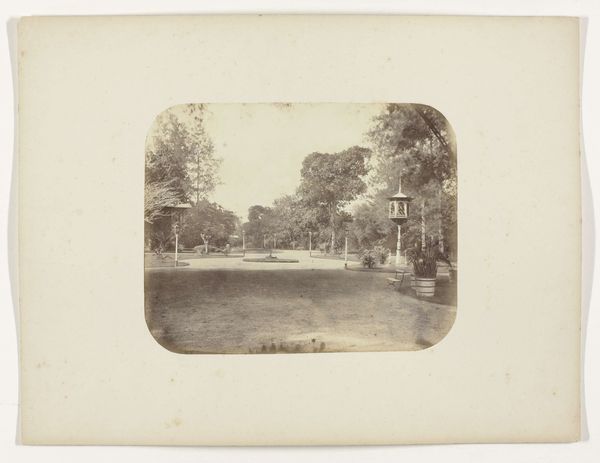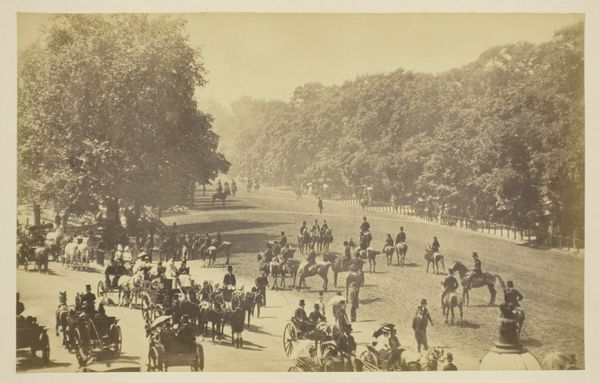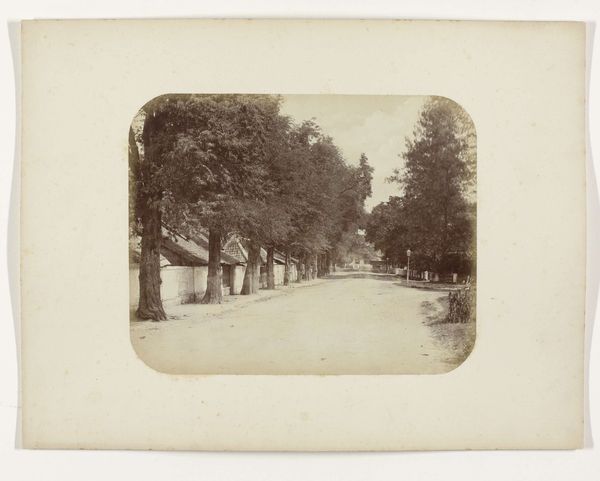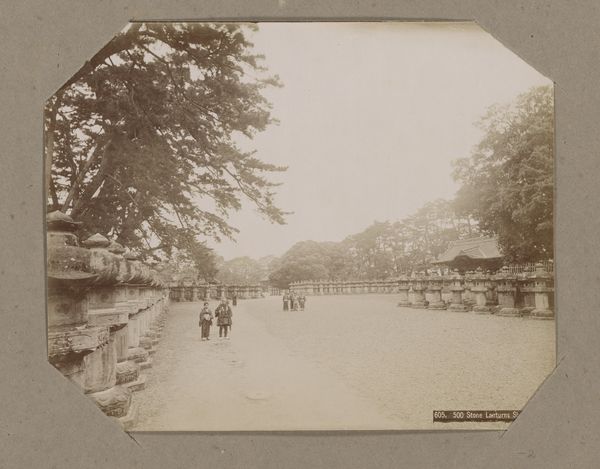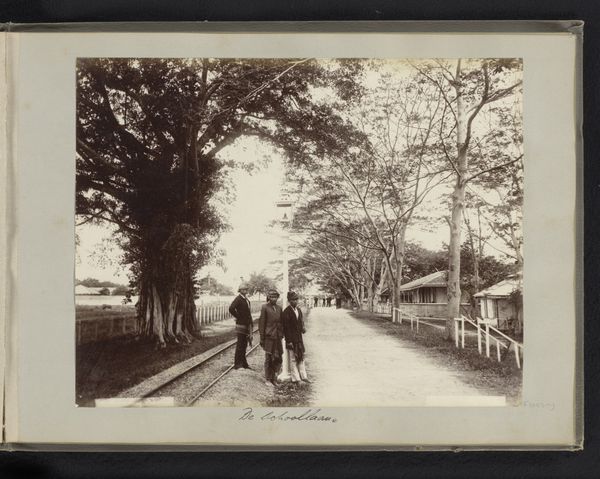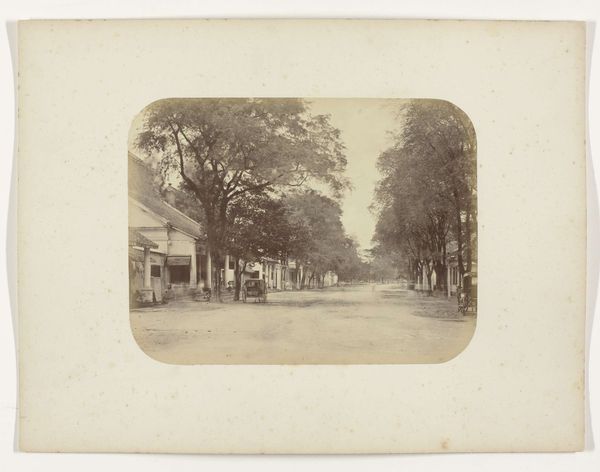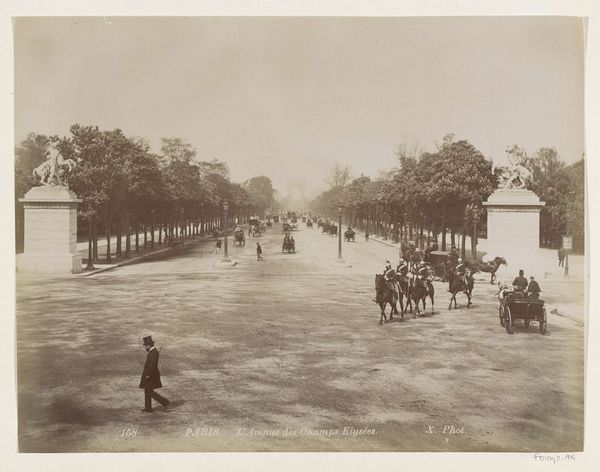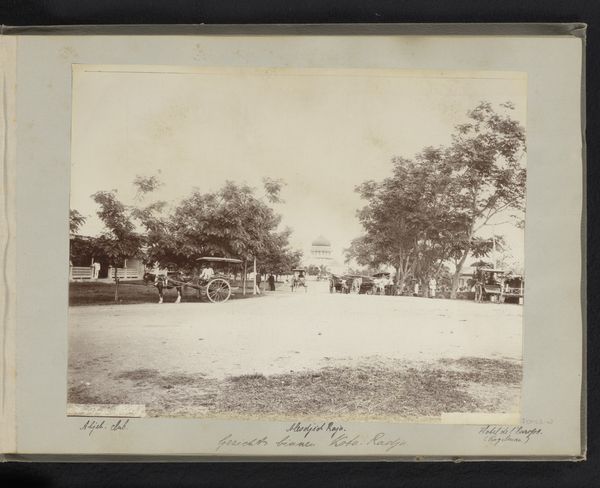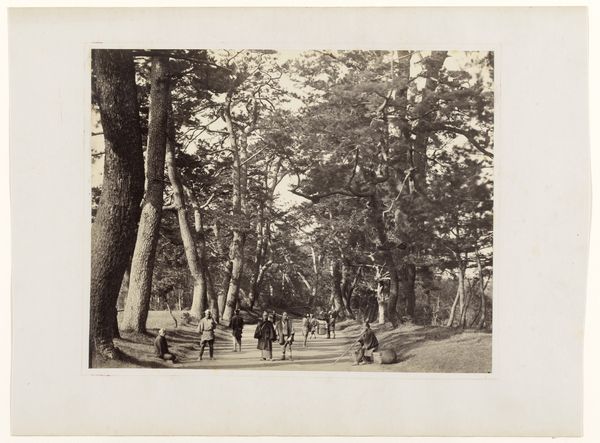
photography, albumen-print
#
pictorialism
#
impressionism
#
landscape
#
street-photography
#
photography
#
cityscape
#
albumen-print
Dimensions: height 212 mm, width 275 mm, height 320 mm, width 379 mm
Copyright: Rijks Museum: Open Domain
Editor: So, this albumen print, "'Perspective de l'Avenue du Bois de Boulogne', Parijs" by X phot. from around 1880-1900, it's incredibly serene, almost like a hazy dream. It makes me wonder, how would you interpret this depiction of Parisian life? Curator: Well, it’s crucial to acknowledge the sociopolitical context of late 19th-century Paris. This photograph presents a carefully constructed image of leisure and affluence. We see the grand avenue, the carriages, and the bourgeois figures strolling, but who is absent? Where are the working class and the realities of urban poverty that existed alongside this opulence? Editor: That's a really interesting point. I was drawn to the aesthetic quality, the light, the composition, but hadn't deeply considered what it omits. Curator: Exactly. Pictorialism, as a style, often idealized scenes, softening the harsh realities. This image reinforces a certain narrative about Parisian life, one that privileges the wealthy and obscures the struggles of others. How does that selective framing impact our understanding of the city at that time? Editor: So, it's not just a beautiful scene, but a conscious construction that reflects and reinforces existing power dynamics. It is a romantic, exclusionary portrayal. Do you think the photographer was conscious of this or simply capturing what was in front of them? Curator: Conscious or not, the photographer operated within a system of representation. Consider the gendered aspect: women are largely depicted as figures of leisure, objects of the gaze, rather than active participants in public life. Recognizing these patterns helps us deconstruct the myth of a harmonious, universally enjoyable Paris. Editor: I hadn’t considered the gaze here either, just accepting what the photo was showing. I’m left thinking about the untold stories, the lives not represented in this seemingly peaceful scene. Curator: Precisely, we learn to see beyond the surface, to question whose perspective is being centered, and to seek out the missing voices.
Comments
No comments
Be the first to comment and join the conversation on the ultimate creative platform.
